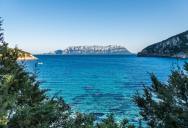Does Living in “Blue Zones” Help You Live Longer?
Certain geographical areas known as “Blue Zones” are home to populations with above-average life expectancy, including multiple centenarians. While many believe these locations have captured the elusive “fountain of youth,” others are skeptical.

Photo Source: Pexels
The five identified Blue Zones are:
• Sardinia, Italy
• Okinawa, Japan
• Nicoya Peninsula, Costa Rica
• Icaria, Greece
• The Seventh-day Adventists of Loma Linda, USA
The theories about why inhabitants of these areas tend to live longer are highly speculative. While there have been no controlled studies of the population in these regions, research into potential variables has identified common behaviors associated with healthy living.
People living in Blue Zones share lifestyle habits, including diet, exercise, and religious practices. They tend to be vegetarians. They consume little or no meat and moderate amounts of alcohol. They also eat more beans, soy-based products, whole grains, and nuts than the rest of the world. This combined behavior has many health benefits including improved sleep and reduced risk of cancer and coronary diseases.

Photo Source: Pexels
Blue Zone residents commonly practice regular fasting, reducing caloric intake and the dangers of obesity. Their cultures prioritize sleep and participate in daily low-impact exercise. Studies have shown that quality sleep and regular exercise increase life expectancy.
Increased attention to mental health, whether it be a religious or community-based sense of purpose, is another Blue Zone practice that could explain their longer lifespans. While there may not be hard evidence of a “fountain of youth” in Blue Zones, their commonsense lifestyle habits serve as a healthy guide to the rest of the globe.

Sign up to get our BEST stories of the week straight to your inbox.




